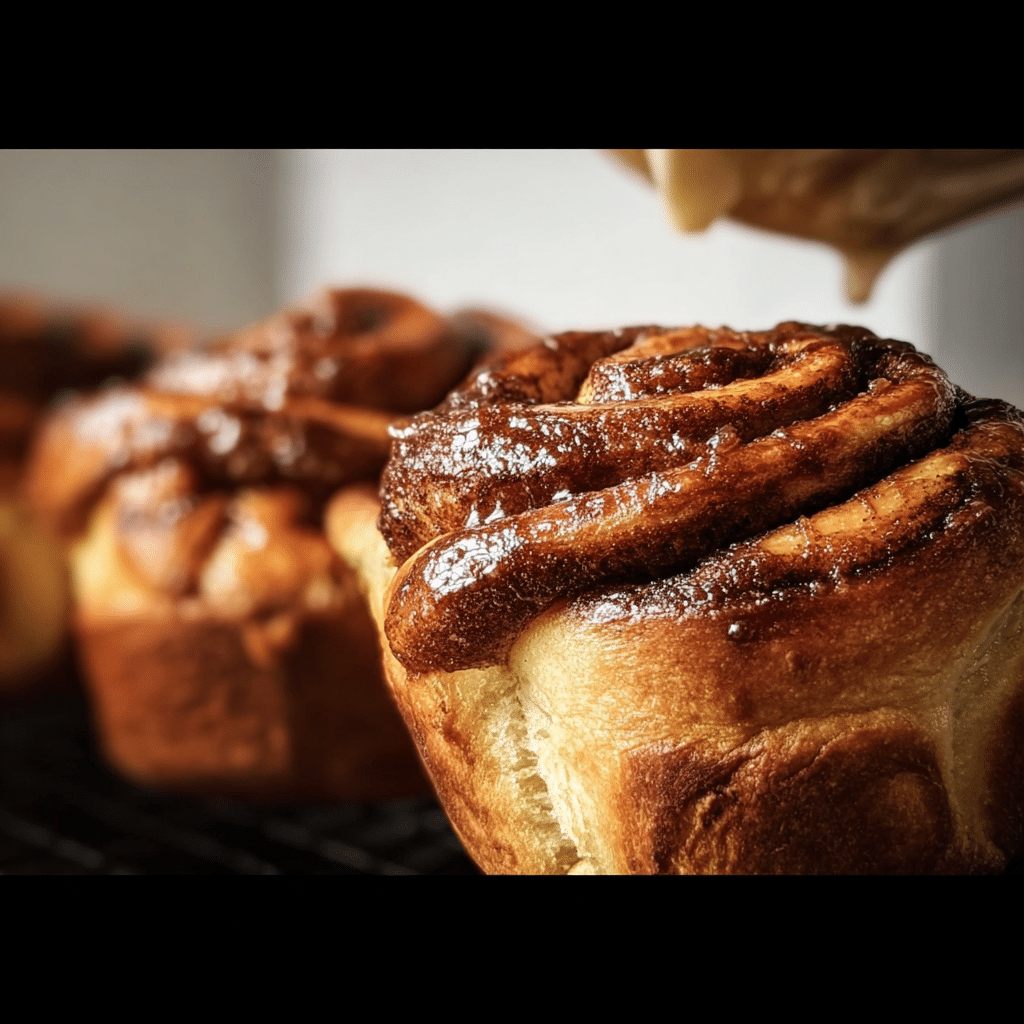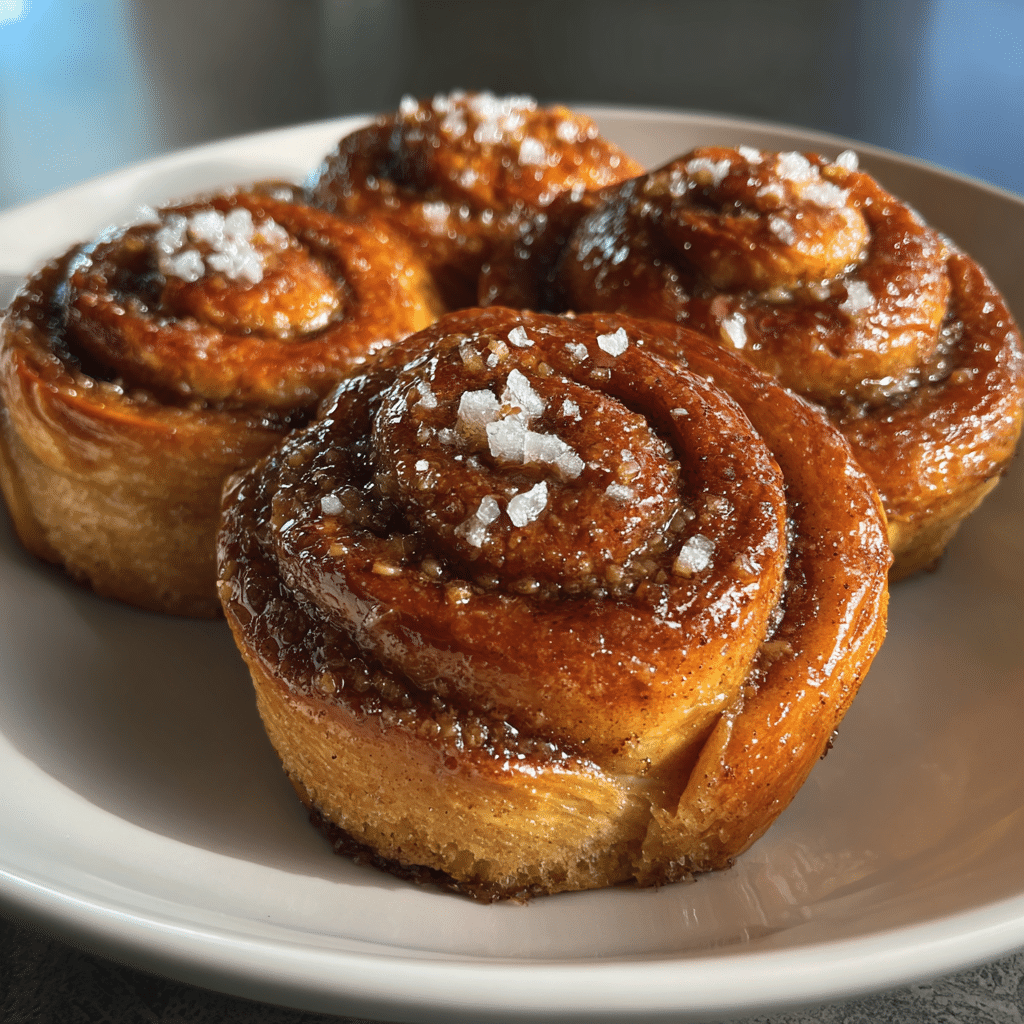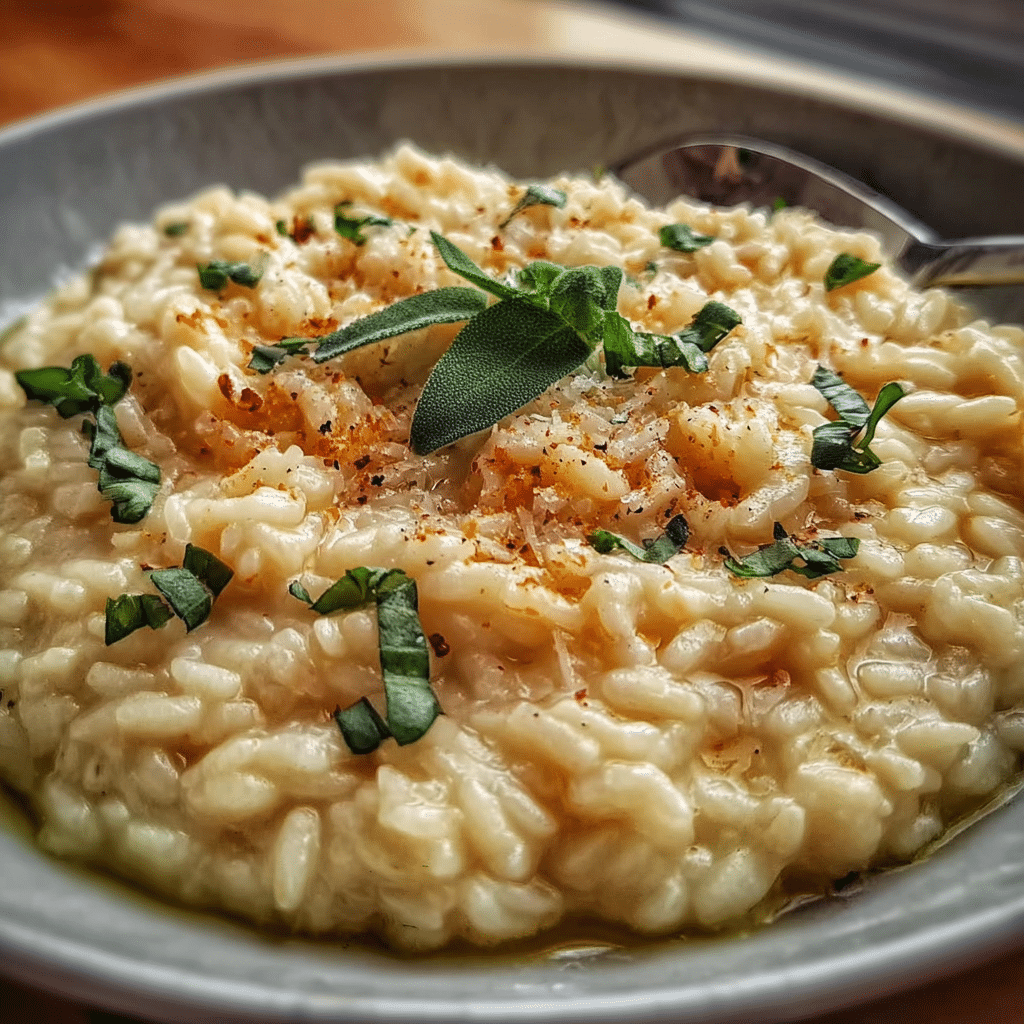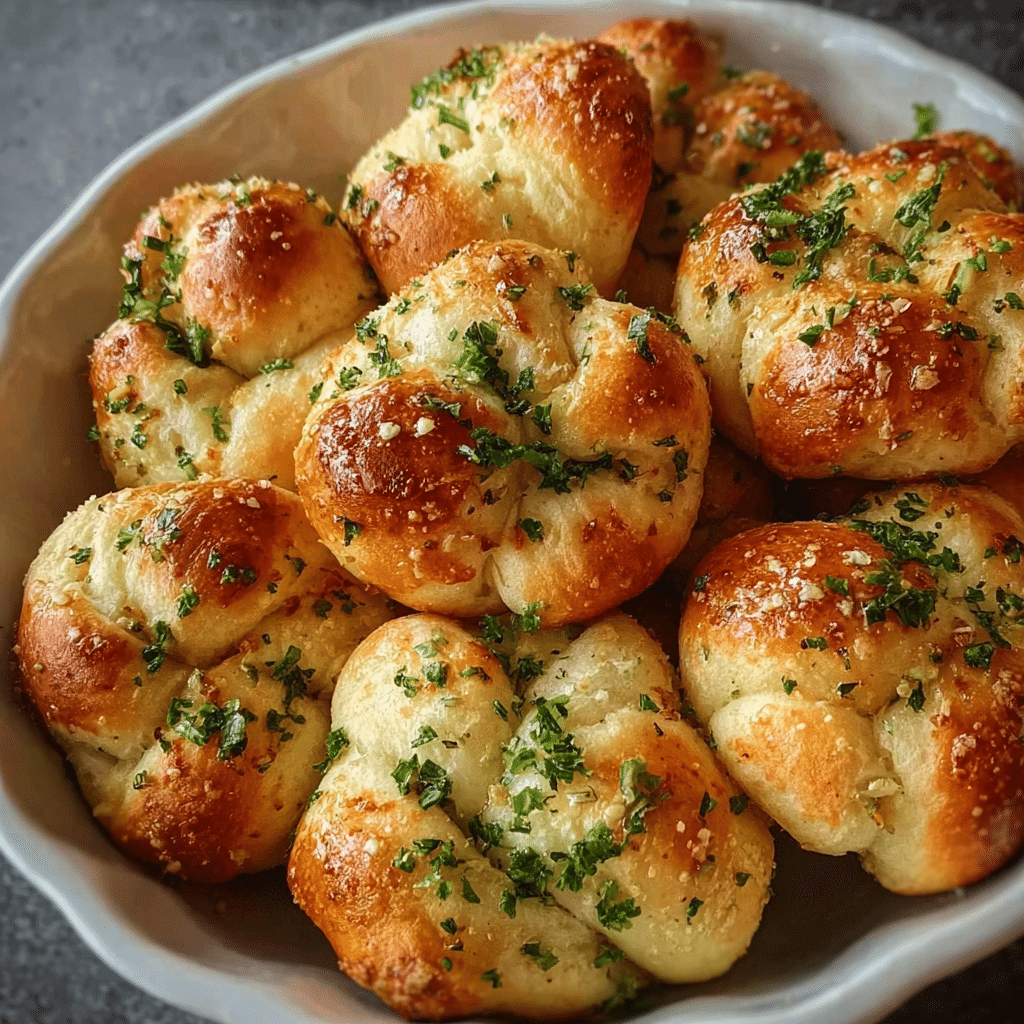Homemade sourdough cinnamon buns are not just a recipe; they are a warm embrace that fills your kitchen with the sweet scent of cinnamon and fresh bread. The first time I tried to make these delightful treats, I was pleasantly surprised by how simple yet rewarding the process was. As someone who has always loved baking but often felt overwhelmed by the complexity of some recipes, homemade sourdough cinnamon buns felt like a revelation. It was a chilly Sunday morning, and I decided to tackle this recipe after a friend had raved about it. The moment I pulled that first batch from the oven, golden and fragrant, I knew I had stumbled onto something special.

As I took a bite, the warm, gooey cinnamon filling melted in my mouth. The combination of the tangy sourdough and the sweet cinnamon was unlike anything I had tasted before. It instantly transported me back to my childhood, reminding me of family gatherings where homemade treats were the centerpiece. Each bun was not just a pastry; it was a connection to those cherished moments, a slice of nostalgia wrapped in dough. This recipe is not just about the ingredients; it’s about the memories that come rushing back with every bite.
The Story Behind This Recipe
The history of cinnamon buns is fascinating and rich. Originating in Sweden, the kanelbullar, or cinnamon roll, was traditionally enjoyed with coffee during Fika, a beloved coffee break. With its roots in Scandinavia, the concept of sweet, spiced bread has traveled around the globe, taking on various forms and interpretations. The invention of sourdough bread, on the other hand, dates back to ancient civilizations, where naturally occurring yeast and bacteria were harnessed for leavening. The combination of these two beloved treats into homemade sourdough cinnamon buns is a celebration of tradition and modern culinary art.
What makes my homemade sourdough cinnamon buns special is the unique flavor profile that sourdough brings to the table. Unlike traditional cinnamon rolls, which can sometimes taste overly sweet and one-dimensional, the sourdough starter adds a delightful tanginess that balances the sweetness perfectly. It’s a game changer for anyone who loves a good cinnamon bun but craves complexity in flavor. Plus, this recipe is a fantastic option for busy families. You can prep the dough in advance and refrigerate it overnight, allowing you to bake fresh buns in the morning with minimal effort—perfect for a cozy family breakfast or brunch.
Seasonally, these homemade sourdough cinnamon buns shine during the fall and winter months. With the holidays around the corner, they become a staple at gatherings, serving as a perfect treat for guests or a delightful way to start Christmas morning. The warmth of the cinnamon and the coziness of the dough evoke feelings of comfort and togetherness, making them ideal for family traditions. The beauty of this recipe lies in its versatility; you can easily customize the filling with nuts, dried fruits, or even chocolate, making it suitable for all tastes and occasions.
For me, homemade sourdough cinnamon buns represent love—the love of baking, the love of family, and the love of sharing food with those we cherish. It’s the kind of dish that draws people together, creating lasting memories that linger long after the last bite. As you embark on this baking journey with me, I promise you will learn not only how to make these delicious buns but also how to infuse your own stories and traditions into this time-honored recipe.
The Rich History and Cultural Significance of homemade sourdough cinnamon
The rich history and cultural significance of homemade sourdough cinnamon buns is a tapestry woven through time and geography. The origins of cinnamon buns can be traced back to northern Europe, particularly Scandinavia. The Swedish kanelbullar, with its soft, fluffy texture and aromatic filling, is perhaps the most famous iteration. But what’s intriguing is how this simple, sweet treat evolved over centuries, adapting to local tastes and ingredients as it made its way around the world.
Origins and History
The earliest known cinnamon buns likely emerged in the early 20th century in Sweden, where bakers began experimenting with sweet yeast doughs. The introduction of cinnamon, a spice that had been traded from Asia for centuries, added a touch of exotic flavor to the otherwise simple bread. As the recipe spread, variations started to appear, with each region adding its own twist. For instance, in Finland, the buns are often shaped into a figure-eight, while in Denmark, they might be filled with marzipan. The beauty of homemade sourdough cinnamon buns lies in their adaptability; they can be made with varying levels of sweetness, different spices, and even fillings like nuts and fruit.
As sourdough gained popularity among home bakers, particularly during the health-conscious movements in recent years, it found its way into cinnamon bun recipes. The fermentation process of sourdough not only enhances the flavor but also increases the nutritional value, making these buns a more wholesome choice. The use of a sourdough starter, which is cultivated from wild yeast and bacteria, adds depth and character that simply cannot be achieved with commercial yeast. This fusion of traditional cinnamon roll and sourdough techniques has birthed a delightful delicacy that honors its roots while embracing modern culinary trends.
Cultural Significance
In Scandinavian culture, cinnamon buns are more than just a treat; they are a symbol of hospitality and warmth. The act of serving fresh cinnamon buns to guests is a way of showing care and appreciation. This tradition has been embraced in various forms across the globe, where homemade sourdough cinnamon buns are often featured at family gatherings, holiday celebrations, and even as a comforting snack. In many households, the preparation of these buns is a cherished ritual, passed down through generations. It’s not uncommon to see families gathered in the kitchen, laughing and sharing stories while the dough rises and the aroma fills the air.
The significance of these buns extends beyond mere enjoyment; they serve as a reminder of the importance of community and connection. In today’s fast-paced world, taking the time to bake and share food with loved ones can be a profound act of love and care. Homemade sourdough cinnamon buns inspire us to slow down, to savor the moment, and to cherish the bonds we share with those around us.
Nutritional Benefits
One of the most appealing aspects of homemade sourdough cinnamon buns is their nutritional profile. Sourdough fermentation not only enhances flavor but also improves digestibility and nutrient absorption. The long fermentation process breaks down gluten and phytic acid, making it easier for our bodies to absorb essential vitamins and minerals. Moreover, cinnamon itself is known for its health benefits, including its anti-inflammatory and antioxidant properties. By incorporating whole grains into the dough, you can further boost the nutritional value, creating a treat that is both indulgent and nourishing.
In conclusion, the journey of homemade sourdough cinnamon buns is rich with history, culture, and significance. From their Scandinavian origins to their modern-day adaptations, these delightful treats continue to bring people together. They are a celebration of flavor, tradition, and connection, reminding us of the simple joys found in baking and sharing food with loved ones. As you embark on making your own homemade sourdough cinnamon buns, you are not just following a recipe; you are becoming part of a long-standing tradition that honors the past while embracing the present.
Essential Ingredients for Perfect homemade sourdough cinnamon
When embarking on the delightful journey of baking homemade sourdough cinnamon buns, one cannot overstate the importance of selecting the right ingredients. Each component plays a pivotal role not just in flavor but also in texture, rise, and overall success of your buns. Let’s dive deep into the essential ingredients for perfect homemade sourdough cinnamon.
Essential Ingredients
Here’s a complete list of ingredients you’ll need, along with detailed measurements:
- 3 cups all-purpose flour (plus extra for dusting)
- 1 cup active sourdough starter
- 1/2 cup warm milk (or dairy-free alternative)
- 1/4 cup granulated sugar
- 1/4 cup unsalted butter, melted
- 1 large egg
- 1 teaspoon salt
- 2 teaspoons ground cinnamon
- 1/2 cup brown sugar (packed)
- 1/4 cup raisins or nuts (optional)
- 1 egg (for egg wash)
Let’s discuss the role and importance of each of these ingredients:
- All-purpose flour: The backbone of your dough. Look for high-quality, unbleached flour for better flavor and texture.
- Sourdough starter: This is your leavening agent, adding a unique tang and depth of flavor to your buns. Ensure it’s active and bubbly for the best results.
- Warm milk: Provides moisture and helps to activate the yeast in your starter, leading to a softer dough.
- Granulated sugar: Not only does it sweeten the dough, but it also aids in browning during baking.
- Unsalted butter: Adds richness and flavor; using unsalted allows you to control the saltiness of your dough.
- Egg: Acts as a binder, providing structure and richness to the dough.
- Salt: Enhances flavor and controls yeast activity, ensuring a good rise without sacrificing texture.
- Ground cinnamon: The star of the show! It brings warmth and a signature flavor to the buns.
- Brown sugar: Adds depth and moisture to the filling, creating that gooey, sweet center we all love.
- Raisins or nuts: Optional, but they add texture and additional flavor; consider using chopped pecans or walnuts for a crunchy contrast.
- Egg wash: A simple mixture of beaten egg brushed on before baking gives your buns a beautiful golden crust.

Homemade Sourdough Cinnamon Buns
Ingredients
Sweet Dough
- 160 g (2/3 cup) milk, whole or 2%
- 28 g (2 tbsp) unsalted butter, melted (see notes below for variation)
- 1 large egg
- 100 g (1/2 cup) bubbly, active sourdough starter
- 24 g (2 tbsp) granulated sugar
- 300 g (2½ cups) King Arthur all-purpose flour
- 5 g (1 tsp) fine sea salt
- cooking spray or oil, for coating
Cinnamon-Sugar Filling
- 28 g (2 tbsp) unsalted butter (see notes below for variation)
- 100 g (1/2 cup) granulated sugar
- 3 tsp. ground cinnamon
- 1 level tbsp. flour
Glaze
- 2 tbsp unsalted butter, softened
- ⅓ cup whipped cream cheese, room temperature
- ¼– 1/2 cup powdered sugar, sifted (add more if you like it sweet!)
- 1–2 tbsp milk
Instructions
The night before
- Mix the dough: Use a cheese grater to grate the cold butter into a mixing bowl. Add the flour and use a bench scraper or pastry cutter to cut the butter into the flour. Add the sourdough starter discard, buttermilk, honey and salt. Mix with a spatula until the ingredients are well incorporated. Cover the bowl and let rest on the counter for 10-12 hours. (DO NOT add the baking soda or baking powder. This will be added right before rolling out the dough)
The next morning
-
- Make cinnamon sugar filling and glaze: Mix the brown sugar and cinnamon in a small bowl, set aside. In a separate bowl, mix the glaze ingredients and set aside. Preheat oven to 375°F (190°C) and butter a 12″ cast iron skillet.
- Add leavening agents: Mix the baking powder and baking soda in a small bowl with a fork until there are no visible lumps. Sprinkle the mixture on top of the dough and mix it in with your hands.
- Roll out the dough: Generously flour your work surface and turn the dough onto it. Flour the top of the dough. Use a rolling pin to roll the dough into a 12″ x 24″ rectangle.
- Cut out rolls: Use a pastry brush to coat the top of the rectangle of dough with melted butter. Sprinkle the cinnamon-sugar mixture evenly over the surface, leaving a one-half-inch bare strip along the outer edges. Starting on the longest side, roll the dough into a log shape. Use the bench scraper to cut the dough log into 12 pieces (approximately 1.5 inches). Arrange the rolls in the cast iron skillet, leaving space in between each piece to expand.
- Bake: Bake the cinnamon rolls for 35-40 minutes or until the tops are golden brown. Mix the glaze ingredients in a small bowl while the cinnamon rolls are baking. Remove the rolls from the oven and glaze while hot.
How to Bake from Frozen
- Shape the rolls and place them in a round disposable tin lined with parchment paper. Cover with plastic wrap and then tightly with foil before freezing for up to 3 months. When you’re ready to bake, preheat the oven to 350°F (176°C). Uncover the rolls and bake them for 40-45 minutes, or until the tops are golden brown. There is no need to thaw first.
Shopping Tips
When shopping for ingredients, quality matters. For flour, I recommend visiting a local mill if possible, where you can find freshly milled options that elevate your baking. For the sourdough starter, ensure it’s bubbly and has a pleasant, slightly tangy aroma. If you’re sourcing milk, consider organic options for a creamier texture, and check for freshness dates. Always go for unsalted butter from a reputable brand to ensure it has a rich flavor. When it comes to spices, look for whole cinnamon sticks that you can grind at home for the freshest taste—ground spices can lose their potency over time.
Substitutions and Alternatives
For those with dietary restrictions, there are plenty of substitutions available. For a dairy-free option, plant-based milk such as almond or oat milk works wonderfully. If you’re avoiding eggs, a flaxseed meal mixed with water (1 tablespoon flaxseed meal to 2.5 tablespoons water) can serve as an excellent binder. Gluten-free flour blends can be used, but be sure to follow a recipe specifically designed for gluten-free baking to ensure the right texture and rise. When it comes to sugar, coconut sugar or agave syrup can be suitable alternatives depending on your preference.
Now, let’s talk about storage tips. Keep your flour in an airtight container in a cool, dry place, and your sourdough starter should be kept in the refrigerator, fed weekly if not in use. Store your spices in dark glass jars to retain their potency, and always check expiration dates on dairy products. You can save money by purchasing in bulk where possible, especially for flour and sugar, to keep your costs down while baking scrumptious homemade sourdough cinnamon buns.
Detailed Step-by-Step homemade sourdough cinnamon Cooking Instructions
Now that we have gathered our essential ingredients, let’s dive into the detailed step-by-step cooking instructions for making the perfect homemade sourdough cinnamon buns. The process is not only rewarding but also filled with sensory delights—think of the aroma of cinnamon wafting through your kitchen as you bake!
Preparation Steps
- Prepare Your Sourdough Starter: Ensure your sourdough starter is active and bubbly. Feed it at least 4-6 hours before you begin if it’s been refrigerated. The starter should double in size and have a pleasant, tangy aroma. A healthy starter is crucial for the success of your buns.
- Measure and Mix Dry Ingredients: In a large bowl, combine the flour, granulated sugar, salt, and cinnamon. Whisk them together thoroughly to ensure even distribution. This step is essential as it prevents clumping and guarantees that each bite is flavorful.
- Combine Wet Ingredients: In a separate bowl, whisk together the warm milk, melted butter, and egg. Make sure the milk isn’t too hot; otherwise, it could kill the yeast in your starter. The mixture should be just warm to the touch.
- Mix the Dough: Create a well in the center of the dry ingredients and pour in the wet mixture along with your active sourdough starter. Mix with a wooden spoon until a shaggy dough forms. This is where the magic begins, and you’ll start to feel the dough come together.
Cooking Process
- Knead the Dough: Transfer the dough onto a lightly floured surface and knead for about 8-10 minutes until it’s smooth and elastic. If the dough is too sticky, sprinkle a bit more flour as needed. The kneading process is vital for gluten development, which gives your buns structure.
- First Rise: Place the kneaded dough into a greased bowl, cover it with a damp cloth or plastic wrap, and let it rise in a warm place for about 1-2 hours, or until it doubles in size. Keep an eye on it; this is where the dough will gain its beautiful airy texture.
- Prepare the Filling: While the dough rises, mix the brown sugar and ground cinnamon together in a small bowl. This will be the filling for your cinnamon buns, adding the sweet and spicy layers we adore.
- Shape the Dough: Once the dough has risen, punch it down gently to release the air. Turn it out onto a floured surface and roll it into a rectangle about 1/4 inch thick. Brush the rolled-out dough with melted butter, then sprinkle the cinnamon-sugar mixture evenly over the surface, followed by raisins or nuts if desired.
Final Assembly
- Roll and Cut: Starting from one of the long edges, tightly roll the dough into a log. Once rolled, use a sharp knife or kitchen string to cut the log into 1-2 inch sections. You should have lovely rounds of cinnamon goodness.
- Second Rise: Place the cut buns into a greased baking dish, allowing a bit of space between them. Cover with a cloth and let them rise for another 30-60 minutes, or until puffy. This is your last rise, and it’s crucial for achieving that fluffy texture.
- Preheat the Oven: While the buns are rising, preheat your oven to 350°F (175°C). A properly preheated oven is essential for even baking.
- Egg Wash: Beat the egg and brush it over the tops of the buns for a beautiful golden finish.
- Bake: Bake the buns in the preheated oven for about 25-30 minutes or until they are golden brown and sound hollow when tapped. The smell will be intoxicating!
- Cool and Serve: Let the buns cool slightly before serving. They are best enjoyed warm, straight from the oven, but you can also drizzle with a simple icing made from powdered sugar and milk for an extra touch of sweetness.
By following these detailed instructions, you’ll be able to create delicious homemade sourdough cinnamon buns that not only taste amazing but also fill your kitchen with warmth and comfort. Remember, baking is as much about the journey as it is about the final product—enjoy every moment!
Professional Tips and Techniques for homemade sourdough cinnamon
When it comes to baking homemade sourdough cinnamon buns, there’s an art and a science that goes hand-in-hand. With the right tips and techniques, you can transform a simple recipe into a mouthwatering masterpiece that your friends and family will rave about. Whether you’re a beginner or an experienced baker, this guide will help you navigate the intricacies of creating these delightful buns.
Professional Techniques
First and foremost, let’s talk about the importance of your sourdough starter. A healthy starter is the backbone of any successful homemade sourdough cinnamon recipe. Ensure your starter is bubbly and active before you begin. Feed it at least 4 to 6 hours before you plan to bake, and always keep it at room temperature if you’re using it frequently. If you’re not baking regularly, consider storing it in the fridge and feeding it weekly.
When mixing your dough, take the time to knead it properly. The gluten development is crucial for the right texture in your buns. Knead until the dough is smooth and elastic—this should take about 10-15 minutes by hand. You can also use a stand mixer with a dough hook, but keep an eye on it to avoid overmixing.
Another technique to master is the art of proofing. After kneading, let your dough rise in a warm, draft-free area until it doubles in size. This can take anywhere from 1 to 2 hours, depending on the temperature of your kitchen. For a more flavorful dough, consider a longer, cold fermentation in the refrigerator overnight. This allows the flavors to develop more fully and creates a more complex taste in the final product.

Troubleshooting Guide
Even the most seasoned bakers encounter challenges. If your buns are dense, it may be due to an underproofed dough. Make sure to allow enough time for the second rise after shaping the buns. On the other hand, if your buns are overly airy, it could be a sign of overproofing. Aim for a dough that has risen to about 1.5 times its original size during both rises.
Another common issue is achieving the right cinnamon filling consistency. If your filling is too runny, it can leak out during baking. To prevent this, ensure your butter is softened but not melted, and use a mix of brown sugar and cinnamon for a thicker paste. If you find your filling is too dry, add a splash of milk or melted butter to achieve the desired consistency.
Presentation Tips
Once your homemade sourdough cinnamon buns are baked to perfection, presentation becomes key. Consider using a round cake pan for a beautiful spiral effect, and don’t forget to drizzle a simple glaze made from powdered sugar and milk over the top for an extra touch of sweetness. You could also garnish with chopped nuts or a sprinkle of sea salt for a delightful contrast.
For a more rustic presentation, serve the buns on a wooden board with fresh fruits and a side of whipped cream cheese. This not only adds to the aesthetic but also enhances the overall flavor profile of your homemade sourdough cinnamon buns.
Wine and Beverage Pairings
Pairing your delicious buns with the right beverage can elevate the entire experience. A cup of freshly brewed coffee or a latte is a classic choice, as the richness of the coffee complements the sweetness of the buns. If you’re feeling adventurous, try a glass of dessert wine, such as a late-harvest Riesling. The fruity notes will play beautifully with the cinnamon and sugar, creating a perfect harmony.
If you prefer non-alcoholic options, consider serving your buns with spiced chai or a warm apple cider. Both beverages will enhance the cinnamon flavor and provide a cozy touch, perfect for a chilly morning or afternoon treat.
In conclusion, mastering homemade sourdough cinnamon buns involves understanding the techniques of sourdough baking, troubleshooting common issues, and presenting your final product beautifully. With practice and patience, you’ll be able to create buns that not only taste amazing but also look like they came straight from a bakery. Happy baking!
Creative Variations and Adaptations of homemade sourdough cinnamon
While traditional homemade sourdough cinnamon buns are delightful, the beauty of baking lies in creativity and adaptation. By exploring different flavors, ingredients, and cooking methods, you can put your unique spin on this beloved recipe. Below are some exciting variations and adaptations to inspire your next baking adventure.
Seasonal Variations
One of the easiest ways to give your homemade sourdough cinnamon buns a fresh twist is to incorporate seasonal ingredients. In the fall, consider adding pumpkin puree to your dough for a warm, spiced flavor. A sprinkle of nutmeg and cloves in your filling can also evoke autumn vibes.
During the winter months, think about adding cranberries or orange zest to the filling. The tartness of cranberries pairs wonderfully with the sweetness of the cinnamon and sugar. In the spring, fresh fruits like strawberries or blueberries can be swirled into the dough. You could even create a lemon glaze to drizzle over your buns, adding a refreshing touch.
Dietary Adaptations
As dietary preferences evolve, so should our recipes. If you’re looking to create a gluten-free version of homemade sourdough cinnamon buns, consider using a gluten-free flour blend. Keep in mind that gluten-free flours often require additional binding agents like xanthan gum or psyllium husk to mimic the elasticity of wheat flour.
For a vegan adaptation, substitute the butter with coconut oil or vegan butter, and replace the milk with a plant-based milk of your choice. You can also use a flaxseed meal mixed with water as an egg replacement. These small changes allow you to enjoy the deliciousness of cinnamon buns while adhering to your dietary choices.
Creative Twists
Don’t be afraid to get adventurous with flavor combinations. Try a savory version of homemade sourdough cinnamon buns by incorporating herbs like rosemary or thyme into the dough. For the filling, consider using a mix of cheese and garlic instead of the traditional cinnamon sugar. This can create a delightful twist that’s perfect for brunch or a snack.
Another creative twist involves experimenting with different types of sweeteners. Instead of brown sugar, try using maple syrup or honey in your filling for a unique flavor profile. You could also add a layer of chocolate or caramel for a decadent treat that feels indulgent and special. The possibilities are endless!
Additionally, consider different cooking methods. While baking is the traditional way, you could try making your buns in a slow cooker for a warm, gooey dessert. The result will be a softer texture that melts in your mouth. Alternatively, for those warm summer days, you can attempt making them on a stovetop, using a skillet with a lid to create steam, giving you a different texture while still retaining the delicious flavors.
Lastly, don’t forget about leftovers! If you have any buns left over (which is rare), consider transforming them into a bread pudding. Simply tear the buns into pieces, soak them in a mixture of eggs, milk, and spices, and bake until golden. This not only reduces waste but also creates a new and delightful dessert.
In summary, the world of homemade sourdough cinnamon buns is ripe for exploration. By incorporating seasonal ingredients, adapting for dietary restrictions, and experimenting with creative twists, you can make a version that reflects your personal tastes and preferences. Each batch can tell a new story, and who knows—your next variation might just become a family tradition!
Storage, Reheating, and Meal Prep for homemade sourdough cinnamon
When you put in the effort to create delectable homemade sourdough cinnamon buns, it’s important to ensure they remain fresh and delicious for as long as possible. Proper storage, reheating, and meal prep can make all the difference. In this section, we will explore the best methods for storing your homemade sourdough cinnamon buns, how to reheat them without sacrificing quality, and strategies for meal prep that can save you time in the kitchen.
Short-term Storage
Once your homemade sourdough cinnamon buns have cooled completely, storing them correctly is essential to maintain their soft texture and rich flavor. The first option is to keep them at room temperature. Place the buns in an airtight container or a resealable plastic bag. Make sure to separate layers with parchment paper to prevent sticking. This method can keep them fresh for about 2-3 days.
If you live in a particularly humid environment, consider wrapping each bun individually in plastic wrap before placing them in the container. This added layer of protection can help combat moisture while still allowing the buns to breathe. A cloth bag can also be a good option for short-term storage, as it allows airflow while keeping the buns soft.
For those who prefer to enjoy their homemade sourdough cinnamon buns slightly warm each morning, a simple trick is to use the microwave. When you’re ready to indulge, place a bun on a microwave-safe plate, cover it with a damp paper towel, and heat it for about 10-15 seconds. This method helps revive the moisture in the bun without making it rubbery.

Freezing and Long-term Storage
If you want to extend the life of your homemade sourdough cinnamon buns beyond a few days, freezing is an excellent option. Freezing allows you to enjoy your delicious creations at a later date while preserving their flavor and texture.
To freeze your buns, begin by allowing them to cool completely. Once cooled, wrap each bun tightly in plastic wrap. It’s crucial to ensure there are no air pockets, as air exposure can lead to freezer burn. After wrapping, place the buns in a heavy-duty freezer bag or an airtight container. For the best quality, try to consume them within 2-3 months, although they can last longer if stored properly.
When you’re ready to enjoy your frozen homemade sourdough cinnamon buns, there are a few methods for defrosting. The simplest way is to transfer the desired number of buns from the freezer to the refrigerator the night before. This slow thawing method helps maintain moisture and prevents sogginess. If you’re in a hurry, you can also defrost them in the microwave on the defrost setting for a few minutes. After thawing, be sure to reheat them using the methods outlined in the next section.
Reheating Best Practices
To enjoy your homemade sourdough cinnamon buns at their best, reheating them correctly is vital. The goal is to warm them through without drying them out or making them tough. Here are a few methods to consider:
- Microwave: As mentioned earlier, using a microwave with a damp paper towel is an effective method. This helps retain moisture while heating.
- Oven: Preheat your oven to 350°F (175°C). Place your buns on a baking sheet, cover them loosely with aluminum foil, and heat for about 10-15 minutes. This method ensures a crispy exterior while keeping the inside soft and warm.
- Toaster Oven: If you have a toaster oven, this can be an excellent way to reheat just one or two buns. Set to a low temperature and keep an eye on them to prevent over-browning.
Regardless of the method, always check to ensure the center is warmed through, as it can be easy to overlook the middle, especially in thicker buns.
For those who enjoy meal prep, consider making a double batch of these delightful cinnamon buns. They freeze beautifully, allowing you to enjoy homemade goodness on busy mornings. Portion out the buns before freezing; this way, you can easily grab just what you need without defrosting the entire batch.
Lastly, never overlook food safety considerations. When storing any baked goods, always ensure your hands and surfaces are clean to prevent contamination. Always check for signs of spoilage when defrosting or reheating. Homemade sourdough cinnamon buns are a labor of love, and with proper storage and reheating techniques, you can enjoy them at their best for days to come.
Nutritional Benefits and Health Information
Understanding the nutritional benefits of your homemade sourdough cinnamon buns can enhance your baking experience and allow you to make informed choices about incorporating them into your diet. In this section, we will dive deep into the nutritional profile, health benefits, and dietary considerations surrounding this delightful treat.
Nutritional Profile
Let’s break down the key ingredients in homemade sourdough cinnamon buns. Typically, these buns include flour, sugar, butter, milk, eggs, and cinnamon. Each of these ingredients contributes to the overall nutritional value, and understanding them can help you appreciate your baked goods even more.
The star of the show, the sourdough starter, is a fermented mixture of flour and water that contains beneficial bacteria and yeast. This fermentation process not only adds depth to the flavor but also makes the buns easier to digest. A typical serving (one bun) may contain approximately:
- Calories: 250-300
- Carbohydrates: 35-40g
- Fat: 10-15g
- Protein: 5-7g
- Sugars: 10-15g
The exact values can vary depending on the specific recipe and the size of the buns, but this breakdown provides a general idea. Keep in mind that the use of whole grain flour instead of all-purpose flour can further enhance the nutrition by increasing fiber content.
Health Benefits
One of the most significant health benefits of homemade sourdough cinnamon buns lies in the fermentation process. The natural fermentation of the dough not only enhances the flavor but also improves the bioavailability of nutrients. This means that your body can absorb vitamins and minerals more effectively. The beneficial bacteria present in sourdough can also promote gut health by acting as probiotics.
Cinnamon, the star spice in these buns, is known for its numerous health benefits. Studies suggest that cinnamon can help lower blood sugar levels, reduce inflammation, and even fight bacterial infections. It also adds a delightful warmth and sweetness to the buns without the need for excessive sugar.
Furthermore, using high-quality fats, such as grass-fed butter or coconut oil, can provide healthy fats that are beneficial for your body. They can improve heart health and provide a source of energy. Additionally, the use of milk adds calcium and protein, making these buns a more balanced treat.
Dietary Considerations
While homemade sourdough cinnamon buns can be a delightful indulgence, it’s important to consider dietary restrictions and preferences. For those with gluten sensitivities, traditional sourdough made with wheat flour will not be an option. However, gluten-free alternatives are available, such as using almond flour or gluten-free all-purpose blends, though additional adjustments may be necessary to achieve the right texture.
For those monitoring their sugar intake, consider reducing the amount of sugar in the filling or using natural sweeteners like honey or maple syrup. Additionally, you can experiment with adding more spices like nutmeg or cardamom to enhance flavor without relying solely on sugar.
In terms of macronutrient distribution, if you are following a low-carb or keto diet, homemade sourdough cinnamon buns may not fit your needs, but they can be enjoyed occasionally as a treat. Always keep portion sizes in mind, as these buns can be quite rich and satisfying.
In conclusion, while homemade sourdough cinnamon buns are undeniably a delicious treat, they also come packed with nutritional benefits that can fit into a balanced diet. By understanding their nutritional profile, health benefits, and dietary considerations, you can enjoy these delightful buns while making informed choices about your health.
Frequently Asked Questions About Homemade Sourdough Cinnamon
Sourdough discard cinnamon rolls
Sourdough discard cinnamon rolls are a fantastic way to utilize leftover sourdough starter, preventing waste while creating a delicious treat. To make these rolls, combine your sourdough discard with flour, sugar, butter, and spices to create a rich dough. Allow it to rise until it doubles in size, then roll it out, sprinkle with cinnamon and sugar, and roll it up before slicing. For added flavor, consider incorporating nuts or raisins into the filling. Bake until golden brown, and enjoy the delightful chewy texture and tangy flavor that sourdough brings to these rolls.
Homemade sourdough cinnamon buns no yeast
Making homemade sourdough cinnamon buns without yeast relies solely on the natural leavening power of your sourdough starter. Start by mixing your active starter with flour, sugar, and butter to form a soft dough. Allow the dough to rise for several hours or overnight, depending on the strength of your starter, which will give the buns a delicious flavor and texture. After rolling out the dough, generously add cinnamon and sugar to the filling for a sweet contrast to the tangy sourdough. Bake until golden, and consider drizzling a simple glaze over the top for an extra touch of sweetness.
Homemade sourdough cinnamon buns with starter
To create delicious homemade sourdough cinnamon buns with your starter, begin by ensuring your starter is active and bubbly. Mix the starter with flour, milk, sugar, and butter to form a dough that is soft yet elastic. After allowing the dough to rise until it has doubled, roll it out and sprinkle a generous layer of cinnamon and sugar for the filling. For even more flavor, you can add a dash of vanilla or nutmeg to the filling mixture. Once rolled and sliced, allow the buns to proof again before baking to achieve that perfect fluffy texture, and don’t forget to brush them with melted butter right after they come out of the oven!
Quick sourdough cinnamon rolls
If you’re short on time but still craving sourdough cinnamon rolls, quick versions can be made using a more active starter or a combination of sourdough discard and baking powder for leavening. Prepare a simple dough with flour, sugar, butter, and your starter, mixing until just combined. Roll out the dough and fill it with a cinnamon-sugar mixture, then slice and shape into rolls. These rolls can be baked straight away without a long proofing time, though allowing even a brief 30-minute rest can improve texture. For a speedy treat, consider using a higher heat to bake them quickly while maintaining a golden color on the outside and a soft interior.
Conclusion: Mastering the Perfect homemade sourdough cinnamon
Creating the perfect homemade sourdough cinnamon is more than just following a recipe—it’s about understanding the techniques, ingredients, and cultural significance behind this beloved dish. Throughout this comprehensive guide, we’ve explored everything from the historical origins to modern variations, ensuring you have all the knowledge needed to make this recipe your own.
Whether you’re a beginner cook or an experienced chef, the techniques and tips we’ve shared will help you create a homemade sourdough cinnamon that’s not only delicious but also meaningful. Remember that cooking is a journey of discovery, and each time you make this dish, you’ll learn something new.
We encourage you to experiment with the variations we’ve discussed, adapt the recipe to your dietary needs, and most importantly, share it with the people you love. Food has the incredible power to bring people together, and Homemade Sourdough Cinnamon Buns is the perfect dish to create lasting memories around your dinner table.





